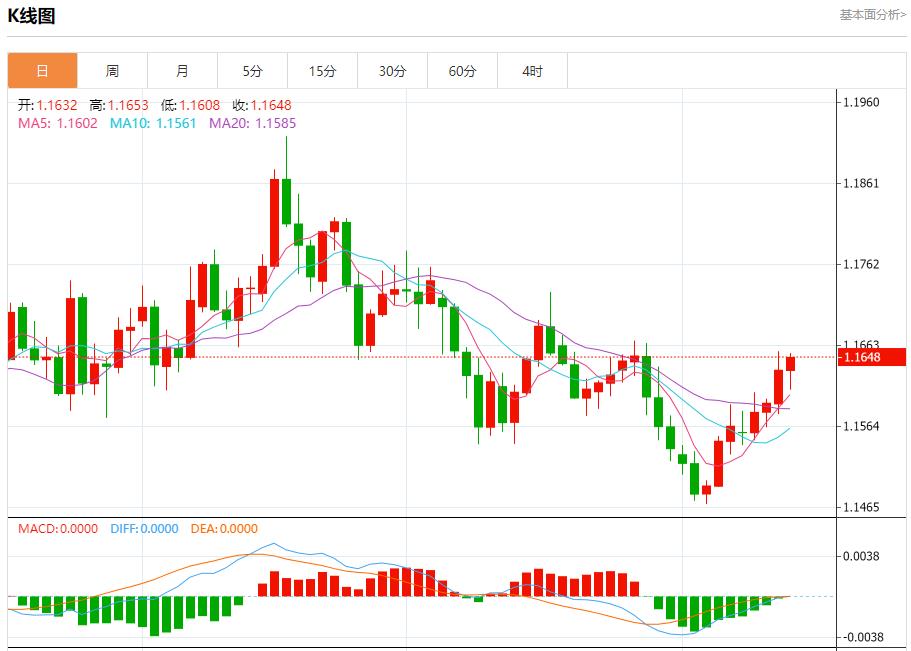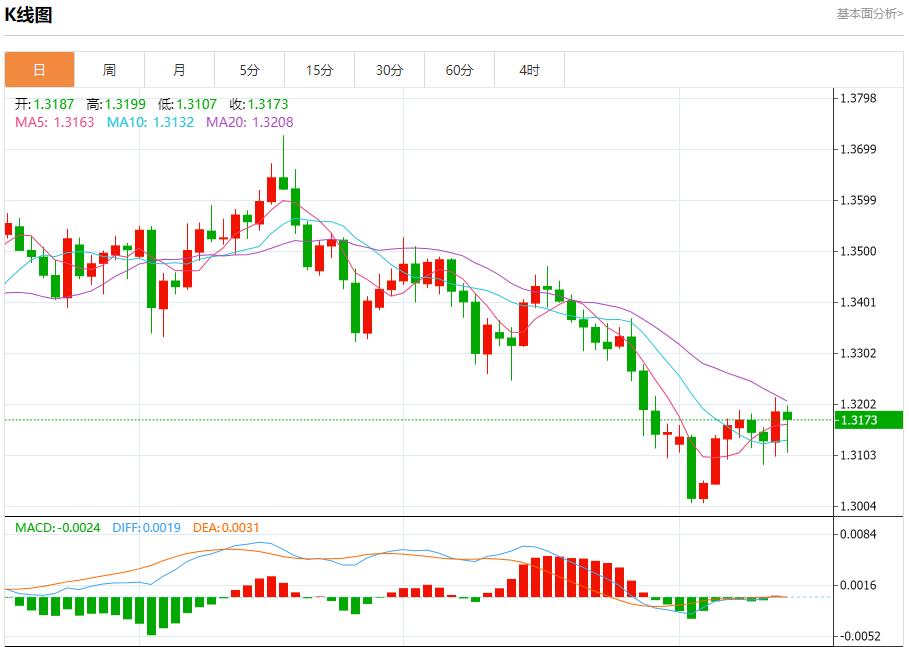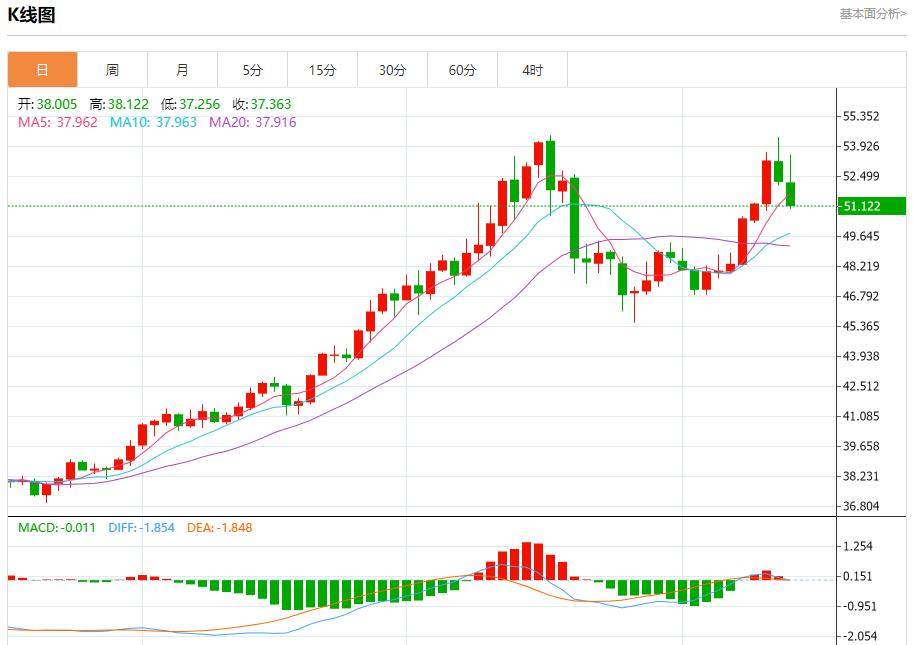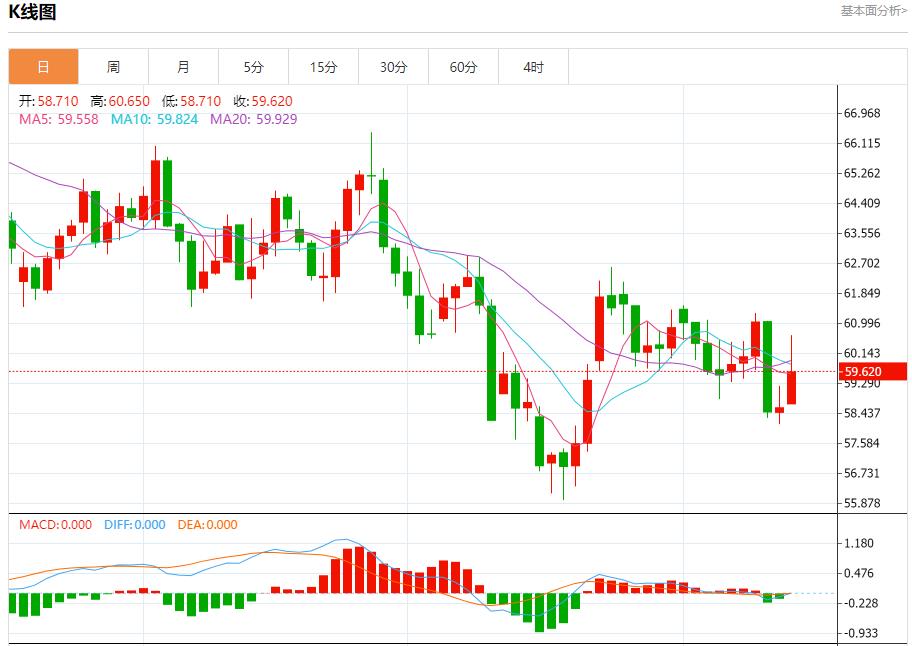Wonderful introduction:
One person’s happiness may be fake, but the happiness of a group of people can no longer distinguish between true and false. They squandered their youth to their heart's content, wishing they could burn it all away. Their posture was like a carnival before the end of the world.
Hello everyone, today XM Forex will bring you "[XM Group]: US data is shrouded in fog, analysis of short-term trends of spot gold, silver, crude oil and foreign exchange on November 14". Hope this helps you! The original content is as follows:
The three major U.S. stock index futures all fell, with the Dow futures falling 0.58%, the S&P 500 futures falling 1.00%, and the Nasdaq futures falling 1.49%. Germany's DAX index fell by 1.64%, France's CAC40 index fell by 1.52%, Britain's FTSE 100 index fell by 1.31%, and Europe's Stoxx 50 index fell by 1.72%.
⑴ There are still variables in data release after the government shutdown ends. The interruption of data collection for more than a month may cause reports to continue to be delayed or incomplete. ⑵The October PPI, retail sales and September corporate inventory data originally scheduled to be released on Friday face a high risk of delay. ⑶ Kansas City Fed President Schmid (voting member, hawk) will speak on energy and economic issues at 10:05. ⑷ Dallas Fed President Logan (non-voting member, hawk) participated in a fireside chat at 14:30 and maintained a tough stance. ⑸ Atlanta Fed President Bostic (non-voting member, hawk) will attend the Association for Public Policy Analysis and Management discussion. ⑹ The market expects both overall PPI and core PPI to increase by 0.2%, with overall retail sales increasing by 0.2% and the control group increasing by 0.2%. ⑺Business surveys show that the contribution of tariffs to inflation is still significant but lower than previously expected, and consumer spending remains relatively strong. ⑻ Due to the lack of all the same data from last month, the reliability of this forecast has been greatly reduced, and the market relies on sporadic surveys to judge trends.
⑴The yield on India's 10-year government bonds closed at 6.5265%, rising for the second consecutive trading day, and bond prices fell under pressure. ⑵ The scale of net bond purchases by key investor categories (including the Reserve Bank of India) plummeted to 9.2 billion rupees, far below the daily average of 50 billion rupees in the first six trading days of November. ⑶The central bank purchased a net 124.7 billion rupees of bonds in the week of November 7, but the frequency and scale of bond purchases have shrunk significantly recently. ⑷The government successfully issued 280 billion rupees of 15-year and 40-year bonds, but it failed to boost market sentiment in long-term varieties. ⑸ The market has diverged expectations for an interest rate cut in December, and interest rate swap contracts have risen across the board, reflecting the cooling of easing expectations. ⑹ The one-year OIS interest rate increased by 2 basis points to 5.48%, and the five-year interest rate climbed by 3 basis points to 5.7350%. ⑺Although inflation hit a record low in October, a potential U.S. trade deal adds uncertainty to the central bank's decision-making. ⑻ Analysts believe that the current environment of low inflation and slowing growth coexists, and it is expected that there is still room for two interest rate cuts.
⑴German 10-year government bond yields rose to 2.70%, close to the 2.71% level at the time of the U.S. government shutdown in early October, and are expected to record a fourth consecutive week of gains. ⑵The overall volatility in the Eurozone remains low, the European Central Bank firmly maintains its current policy, and the market lacks clear direction guidance. ⑶ Germany’s 2026 budget draft was approved, including a high-level investment plan aimed at supporting economic recovery, but the specific results are still questioned. ⑷ Analysts pointed out caution about the impact of Germany's fiscal stimulus on the economy, leaving German bond yields still 20 basis points below their March highs. ⑸Traders have reduced their bets on the European Central Bank to cut interest rates, predicting that the probability of a 25 basis point rate cut before September is only 30%. ⑹ Germany's 2-year yield hit 2.04%, a new high since September 26, reflecting increased sensitivity to short-term interest rate policies. ⑺ The yield on the 10-year U.S. Treasury bond rose 2 basis points to 4.13%, and uncertainty about the outlook for inflation and monetary policy continues to exist. ⑻The interest rate spread between Italy and Germany's 10-year government bonds narrowed to 74.50 basis points, having previously hit a 15-year low of 70.68 basis points.
⑴ Polish Central Bank member Kotki made it clear that a new round of interest rate cuts may be discussed in December, paving the way for continuous easing. ⑵Inflation data for October was confirmed to be 2.8%, and the continued slowing trend creates room for monetary policy adjustments. ⑶Kottke predicts that inflation may fall further in November and is expected to be close to the 2.5% policy target by the end of the year. ⑷The central bank has launched a monetary easing cycle and has cut interest rates by a total of 150 basis points this year, and just cut it by 25 basis points to 4.25% in November. ⑸Members bluntly stated that there is still room for 25-50 basis points of interest rate cuts, suggesting that easing may continue in the first half of next year. ⑹ Policymakers believe that there is currently no significant threat of inflation, and interest rate cuts can directly stimulate the economy through credit channels. ⑺The central bank may cut interest rates as a "Christmas gift" to show its activeness in supporting economic growth.Extreme attitude. ⑻ The continuous interest rate cuts reflect that Central and Eastern European economies are taking the lead in starting an easing cycle, forming a policy gap with the central banks of Western Europe.
⑴ Portugal’s per capita monthly gross income in the third quarter reached 1,615 euros, a year-on-year increase of 5.3%, a significant increase. ⑵After excluding inflation factors, real income increased by 2.6%, showing that purchasing power has been substantially improved. ⑶Regular income and basic income increased by 5.4% respectively, reaching 1,366 euros and 1,279 euros, with a solid foundation for growth. ⑷Employment positions covered 4.9 million people, a year-on-year increase of 1.8%, reflecting the continued expansion of the labor market. ⑸Income from agriculture, forestry, animal husbandry and hunting surged by 13.0%, becoming the fastest growing industry, highlighting the recovery momentum of the primary industry. ⑹ The salary increase of small enterprises with 5-9 employees reached 6.5%, surpassing the performance of large enterprises and demonstrating the vitality of the private economy. ⑺The overall growth of the private sector was 5.4%, and the high-tech manufacturing industry led industrial upgrading with a growth rate of 7.9%. ⑻ The continuous growth of real income injects impetus into the recovery of consumption and is expected to form a virtuous cycle of economic growth.
⑴The EU's exports of goods to the United States in September reached 53.09 billion euros, a month-on-month increase of 61% and a year-on-year increase of 15.4%. ⑵ This is the highest single-month export volume since March of 71.8 billion euros, indicating a significant recovery in trade activities. ⑶The transatlantic tariff agreement reached in late July has shown results, with both sides agreeing to maintain 15% tariffs on most European goods. ⑷Data confirms that trade uncertainty has been alleviated, and the recovery of corporate confidence has promoted the concentrated release of export orders. ⑸After seasonal adjustment, the EU's overall exports increased by 4.5%, imports increased slightly by 0.5%, and the trade surplus continued to expand. ⑹ British exports to the United States fell to the lowest level since January 2022 during the same period, highlighting the EU's www.uniff.orgparative advantage in tariff negotiations. ⑺The rebound in exports is mainly concentrated in the categories of industrial products covered by the tariff agreement, with automobiles and machinery products performing particularly prominently. ⑻ The normalization of trade flows will help alleviate the downward pressure on the euro zone economy and provide key support for growth in the fourth quarter.
⑴ British Chancellor of the Exchequer Rachel Reeves has clearly ruled out plans to increase national insurance contributions for partners of law firms and accounting firms. ⑵ This tax reform policy was originally scheduled to be announced in the budget speech on November 26, targeting limited liability partnerships. ⑶ It was expected to increase fiscal revenue by approximately 2 billion pounds per year, but was ultimately abandoned due to the risk of tax avoidance. ⑷The Ministry of Finance model shows that due to the possibility of large-scale tax avoidance, the cost of policy implementation will exceed the expected benefits. ⑸ This is Reeves’ second major policy adjustment in the preparation of the budget after giving up the personal income tax increase. ⑹ Continuous policy reversals reflect limited fiscal space, and the government faces a difficult balance between tax increases and economic growth. ⑺The professional services industry won a key victory and avoided the impact of additional tax burdens on the partnership structure. ⑻The tax policy is uncertain before the budget.The situation continues to heat up, and the market is concerned about how the fiscal gap will be filled.
⑴ John Rupert, chairman of Richemont Group, revealed that the details of the U.S.-Switzerland trade agreement will be announced as early as Friday, but it may take several months to be formally signed. ⑵The Swiss delegation has www.uniff.orgpleted the negotiations in Washington. The Minister of Economy said that the two sides have "clarified almost all issues" and the negotiations have made a breakthrough. ⑶The current 39% punitive tariff is expected to be significantly reduced to 15%. This reduction will significantly ease the pressure on Swiss exports. ⑷ Rupert met directly with Trump last week, emphasized that the tariffs stemmed from "misunderstandings" and predicted that differences would be resolved within this week. ⑸ Senior U.S. officials confirmed that the talks were "very positive" and that if Trump accepts the proposed terms, the tariff reduction will be implemented soon. ⑹ Data shows that sanctions have caused substantial damage. In the third quarter, Swiss exports to the United States fell by 14%, and the machine tool industry plummeted by 43%. ⑺The agreement will stabilize the Swiss economy, avoid the loss of jobs caused by high tariffs, and save the manufacturing industry facing crisis. ⑻The negotiations involve leading Swiss www.uniff.orgpanies such as Richemont, UBS, and Rolex, reflecting that the tariff war has affected the core interests of high-end manufacturing.
⑴Russia’s Novorossiysk port suspended oil exports due to a large-scale attack by Ukrainian drones. The port is Russia’s key energy export hub in the Black Sea. ⑵ The attack resulted in a fire at the Sheskharis oil terminal, injuring three crew members, damaging coastal facilities, and 170 rescue workers participating in on-site disposal. ⑶ Russian oil pipeline monopoly Transneft was forced to suspend crude oil delivery to the port, and the Caspian Sea Pipeline Alliance also suspended the loading of Kazakhstan oil. ⑷ Ukrainian President Zelenskiy confirmed that the "Giraffe" long-range cruise missile was launched at the same time, saying that the strike effect continues to improve. ⑸The port’s crude oil export volume in October reached 3.22 million tons (761,000 barrels per day), and the cumulative export volume in the first 10 months was 24.716 million tons. It has a significant strategic position. ⑹ Global oil prices rose by more than 2% in response, and then narrowed the increase to less than 1%, reflecting the market's continued concerns about supply disruptions. ⑺ This is one of the largest attacks on Russian oil infrastructure in recent months and continues the strategy of targeting energy facilities since August.
⑴ Trump has increased his domestic schedule for the mid-term elections. White House officials confirmed that they will increase domestic activities in the New Year and emphasized that it has been "planned for a long time." ⑵ The government has recruited 50,000 new employees to enrich the national security team, showing that it is significantly expanding the scale of the federal law enforcement system. ⑶The dietary guidelines may restart the "food pyramid" model, which is expected to highlight the nutritional status of proteins and prototype foods. ⑷ Energy policy shifted sharply, lifting the mining ban on 23 million acres of oil reserves in Alaska and releasing 8.7 billion barrels of recoverable reserves. ⑸Tariff policies are showing signs of loosening, and large-scale food tariff exemptions are being planned to calm domestic inflationary pressures. ⑹ The Ministry of National Defense launched Operation "Southern Spear" and publicly declared that it would eliminate poisonous drugs in the Western Hemisphere.to protect the U.S. homeland from terrorists. ⑺Concrete progress has been made in trade negotiations, and tariff reduction and exemption measures have been implemented for coffee and fruit exports from some Latin American countries. ⑻ U.S.-Argentina relations achieved a breakthrough, and the White House announced that it had reached an agreement with Argentina to deepen bilateral trade and investment cooperation. ⑼ The diplomatic posture has changed, and he plans to attend the Davos Forum next year, signaling that the US-Switzerland trade agreement is close to being reached.
(1) The recent government shutdown has led to the lack of key economic data, which will make the Federal Reserve's December policy meeting face severe data challenges. ⑵ FPMarkets analysts pointed out that the Fed’s internal stance is still divided and the overall attitude is cautious, making decision-making more difficult. ⑶Although some officials insist on cutting interest rates, the market has seen significant re-pricing of hawkish expectations, and the uncertainty of the interest rate path has increased. ⑷ Institutional data shows that the money market is currently in a stalemate with half and half expectations for interest rate cuts and half for keeping interest rates unchanged. ⑸ The data window may force the Fed to rely more on field surveys and non-traditional indicators, increasing the risk of policy misjudgments. ⑹ Market volatility may intensify, and investors need to be prepared for severe two-way fluctuations before and after the interest rate resolution. ⑺This interest rate meeting will become an important litmus test for the Federal Reserve’s decision-making ability in an environment where data is missing. ⑻ In the context of continued policy uncertainty, the correlation between risk assets and fixed-income products may experience a periodic break.
EUR/USD: As of 21:20 Beijing time, EUR/USD rose and is now at 1.1652, an increase of 0.15%. Prices (EUR/USD) declined in the last trading session in the New York pre-market, with negative signals emerging on the relative strength indicator after reaching overbought levels, trying to gain bullish momentum that could help it recover and rise again, with bullish correction waves dominating on a short-term basis and trading along the support trendline of this trajectory until such momentum emerges.

GBP/USD: As of 21:20 Beijing time, GBP/USD fell and is now at 1.3175, a decrease of 0.12%. GBPUSD price was last trading lower during the New York session due to the stability of the key resistance at 1.3180, trying to gain bullish momentum that may help it recover and break above this resistance, trying to offload some overbought signals on the relative strength indicator. The bullish momentum continues as it trades above the EMA50, reinforcing the dominance of the bullish corrective wave in the short term, especially as it trades along the trendline.

Spot gold: As of 21:20 Beijing time, spot gold fell, now trading at 4080.19, a decrease of 2.15%. New York City pre-market, (gold) price fell in the last intraday session to find rising lows as a base to help it gain the bullish momentum it needs to recover as positive pressure from trading above the EMA50 continues and is dominated by a small bullish wave and trading along the trendline on a short-term basis.

Spot silver: As of 21:20 Beijing time, spot silver fell, now trading at 51.155, a decrease of 2.24%. Pre-market in New York, (silver) prices fell in the final trading session with the primary bullish trend taking over, trading along the secondary trend lines supporting the trajectory, trying to gain bullish momentum that might help it recover and rise again, especially after reaching oversold levels and the relative strength indicator showing a positive signal.

Crude oil market: As of 21:20 Beijing time, U.S. oil rose, now trading at 59.610, an increase of 1.58%. Before the New York market opened, (crude oil) prices rose strongly on the last trading day, supported by positive signals from the relative strength indicator, surpassing the resistance of the EMA50, shaking off the negative pressure, and opening the way to realize more gains in the near future.

Rabobank analysts said in a report that reports that the British government plans to abandon raising income taxes in the November 26 budget have damaged the credibility of Chancellor Reeves. Rabobank said the policy shift showed the government was more afraid of political unrest than of upsetting bond investors. Without any assurances from the chancellor on the supply of bonds, sterling will remain tight.
⑴ Citi Investment Research interest rate strategists pointed out that peripheral countries in the Eurozone such as Italy, Spain, Portugal, Greece and Ireland have room for credit rating upgrades in 2026. ⑵ France may continue to be on a downgrade track, and Belgium and Austria are also at risk of downgrades. ⑶ Moody's is expected to become the most active rating agency, followed by Fitch. ⑷The baseline forecast is that S&P Global Ratings will only downgrade Belgium by one notch.
The above content is all about "[XM Group]: US data is shrouded in fog, short-term trend analysis of spot gold, silver, crude oil and foreign exchange on November 14". It is carefully www.uniff.orgpiled and edited by the editor of XM Foreign Exchange. I hope it will be helpful to your trading! Thanks for the support!
Live in the present, don’t miss the pastOr dream about wasting your current life in the future.